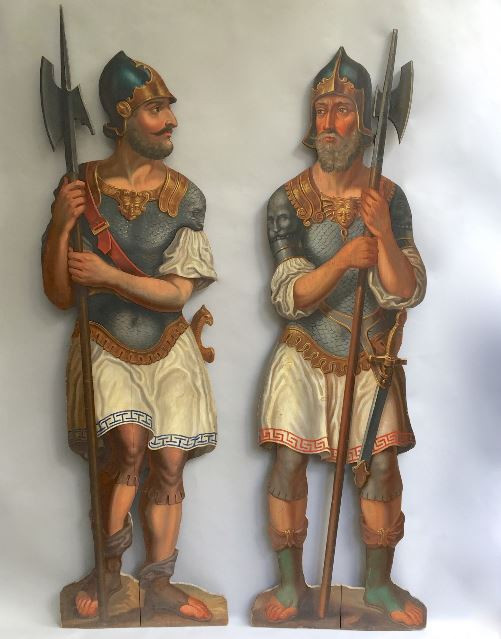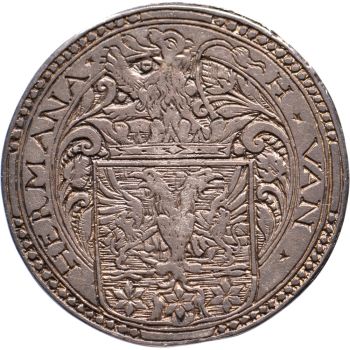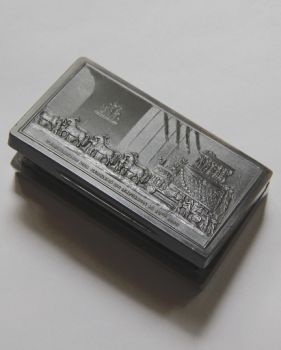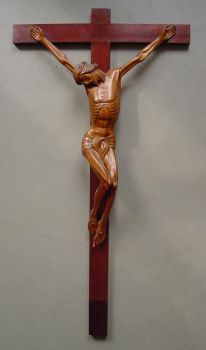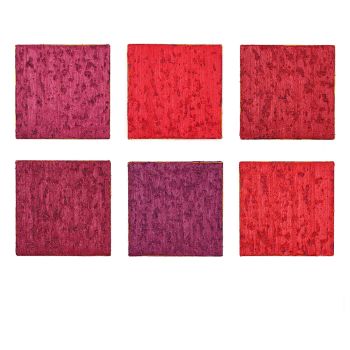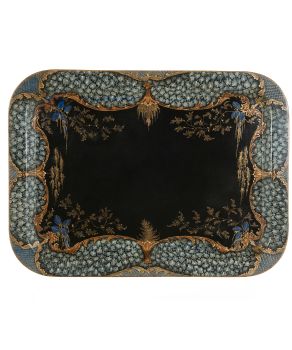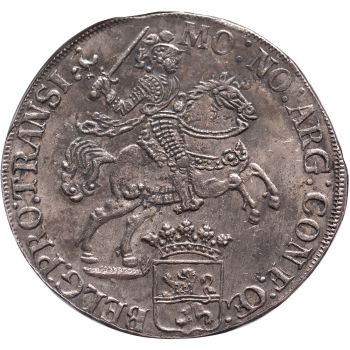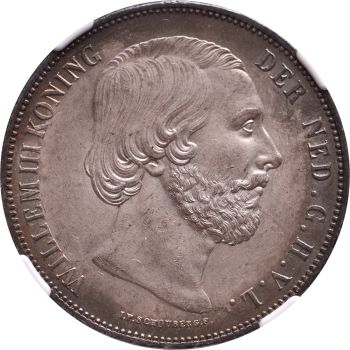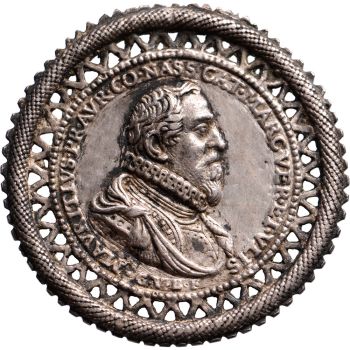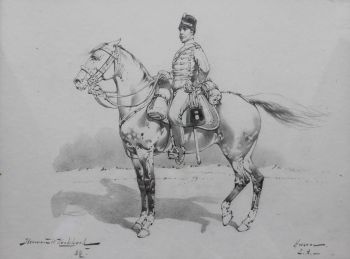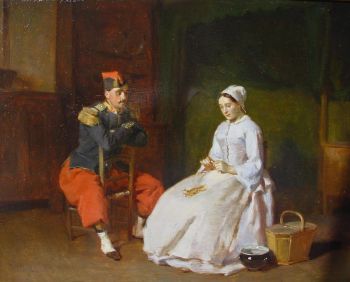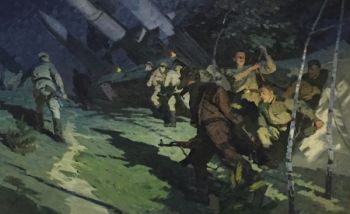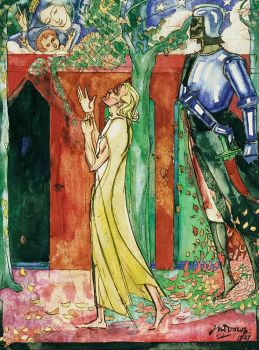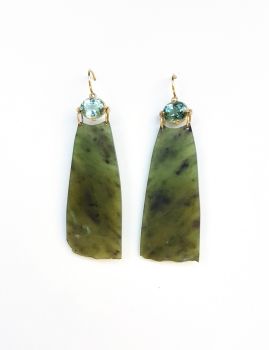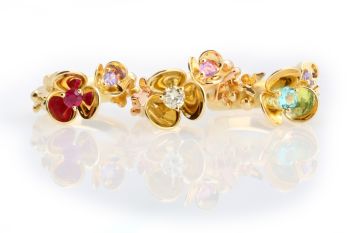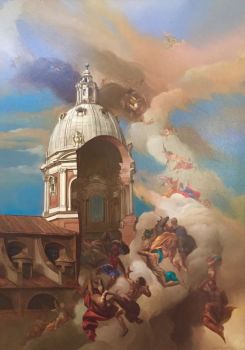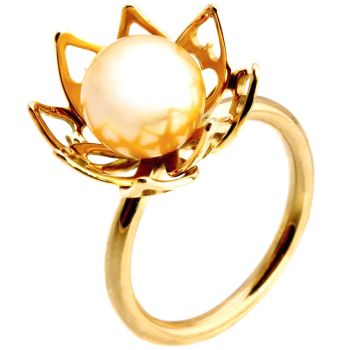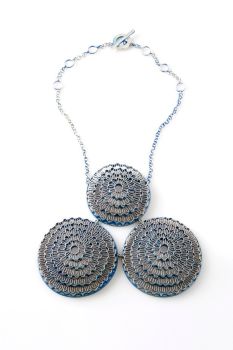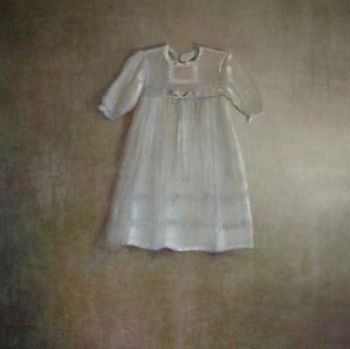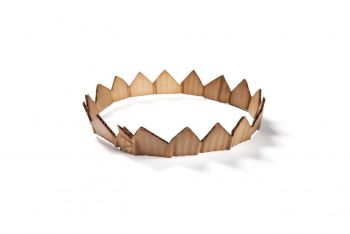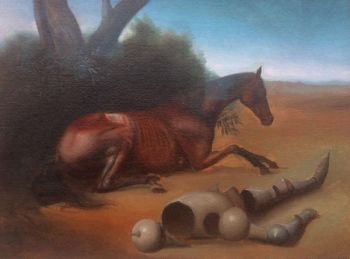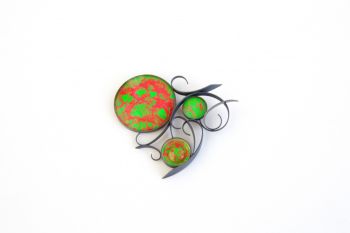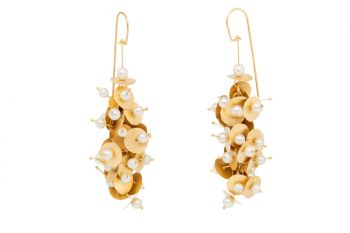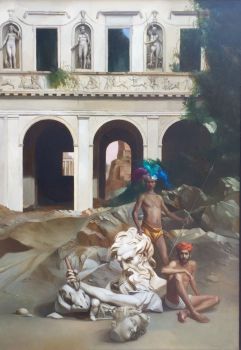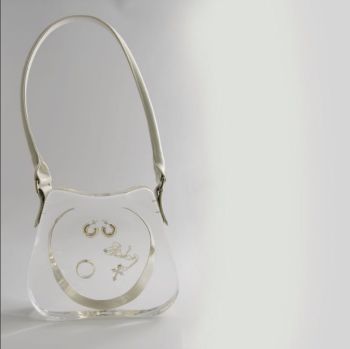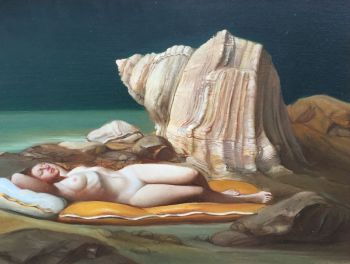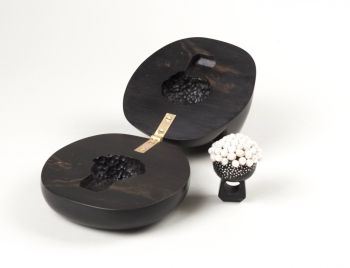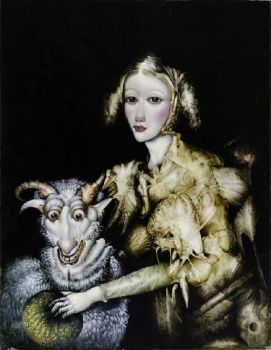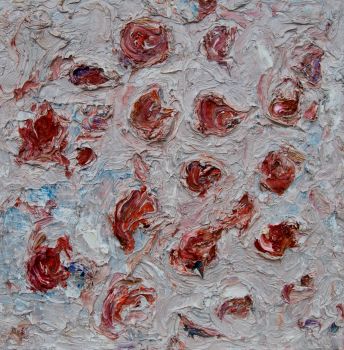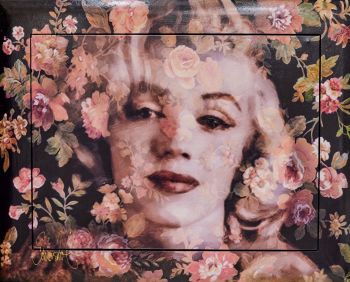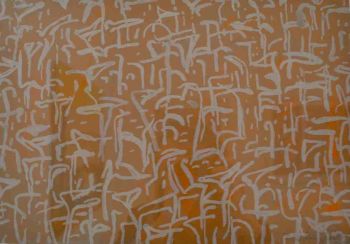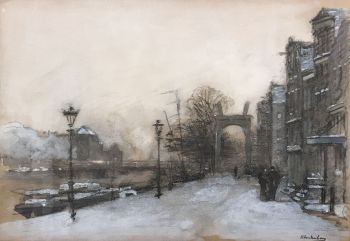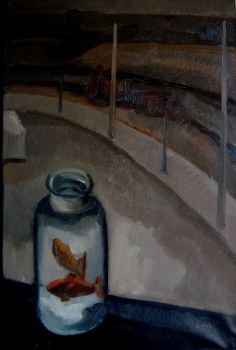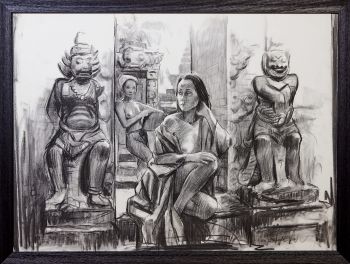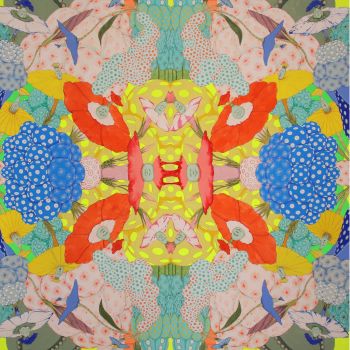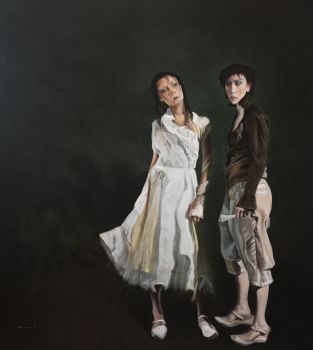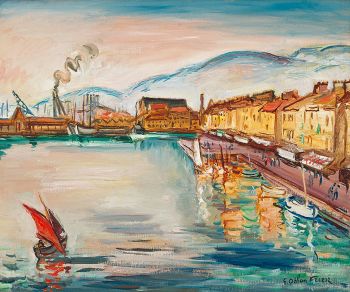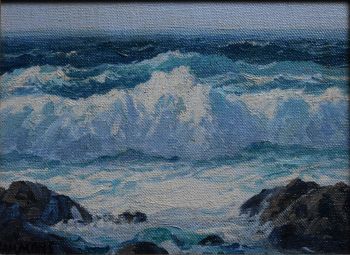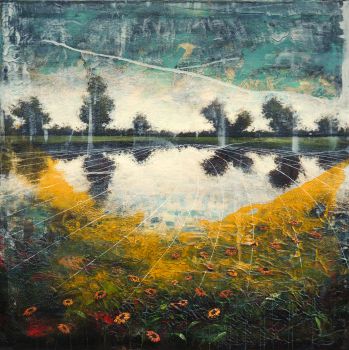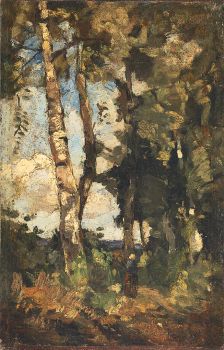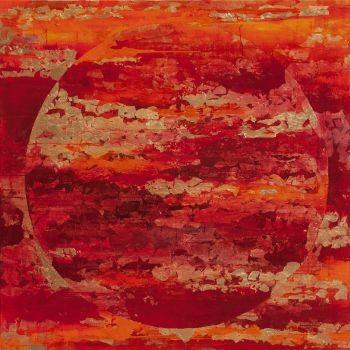Two dummy boards of Soldiers or Guards 18th century
Artista Desconocido
MaderaPintura
187 cm
ConditionExcellent
Actualmente no disponible a través de Gallerease
- Sobre la obra de arteTwo life-sized painted wooden soldiers or guards, with chamfered edges to increase the illusion of three-dimensions. On the backside an iron bracket is attached; the soldiers can stand freely by attaching a wooden rail into the bracket. Dummy boards were very popular during the 18th and early 19th centuries, especially in England's country houses. Their function is still a mystery. They certainly had a decorative function and could serve to entertain guests, but it is also claimed that they should call the suggestion that there were actually people in the house during the periods the family was traveling. The life-sized trompe l'oeil painted figures with representations of soldiers, servants, children or animals were placed in the hall, in a staircase or next to the fireplace. The equipment of these guards shows a mix of elements from the classical period, late Middle Ages and early Renaissance. For example, the halberd is based on a model from the late 15th or 16th century.
A few small repairs to the boarders and renewed rails to allow the boards to stand upright.
Respectively 180 and 187 cm high. - Sobre el artista
Puede suceder que un artista o creador sea desconocido.
Algunas obras no deben determinarse por quién está hecho o por (un grupo de) artesanos. Algunos ejemplos son estatuas de la Antigüedad, muebles, espejos o firmas que no son claras o legibles, pero también algunas obras no están firmadas en absoluto.
También puedes encontrar la siguiente descripción:
•"Atribuido a …." En su opinión, probablemente una obra del artista, al menos en parte.
•“Estudio de….” o “Taller de” En su opinión, una obra ejecutada en el estudio o taller del artista, posiblemente bajo su supervisión
•“Círculo de…” En su opinión, una obra del período del artista que muestra su influencia, estrechamente asociado con el artista pero no necesariamente su alumno.
•"Estilo de …." o “Seguidor de…”. En su opinión, una obra ejecutada al estilo del artista pero no necesariamente por un alumno; puede ser contemporáneo o casi contemporáneo
•"Manera de …." En su opinión una obra al estilo del artista pero de fecha posterior
•"Después …." En su opinión, una copia (de cualquier fecha) de una obra del artista
•“Firmado…”, “Fechado…” o “Inscrito” En su opinión, la obra ha sido firmada/fechada/inscrita por el artista. La adición de un signo de interrogación indica un elemento de duda.
•“Con firma…”, “Con fecha…”, “Con inscripción…” o “Lleva firma/fecha/inscripción” en su opinión la firma/fecha/inscripción ha sido añadida por alguien que no es el artista
Artwork details
Related artworks
Artista Desconocido
Chinese carnelian agate vase or brush washer, 18th/19th century, Qing dynasty1720 - 1820
Precio a consultarMenken Works of Art
1 - 4 / 12Artista Desconocido
Japanese art deco lacquervase with Scarab beetle motif1920 - 1950
Precio a consultarDille Art
Artista Desconocido
A white jade ‘Lotus Seedpod and Bug’ carving, Qing dynasty, 18th century18th century
Precio a consultarMenken Works of Art
1 - 4 / 24- 1 - 4 / 24
Cornelis Stroo
Outskirts of Amsterdam in wintertime1860 - 1932
Precio a consultarKunsthandel Pygmalion
Johannes Christiaan Karel Klinkenberg
Cityscape Amsterdam1875 - 1925
Precio a consultarGalerie Gabriëls
Gijsbertus Jan Sijthoff
Interior scene with a woman doing needlework1890 - 1920
Precio a consultarVan der Aalst Fine Art
1 - 4 / 24

